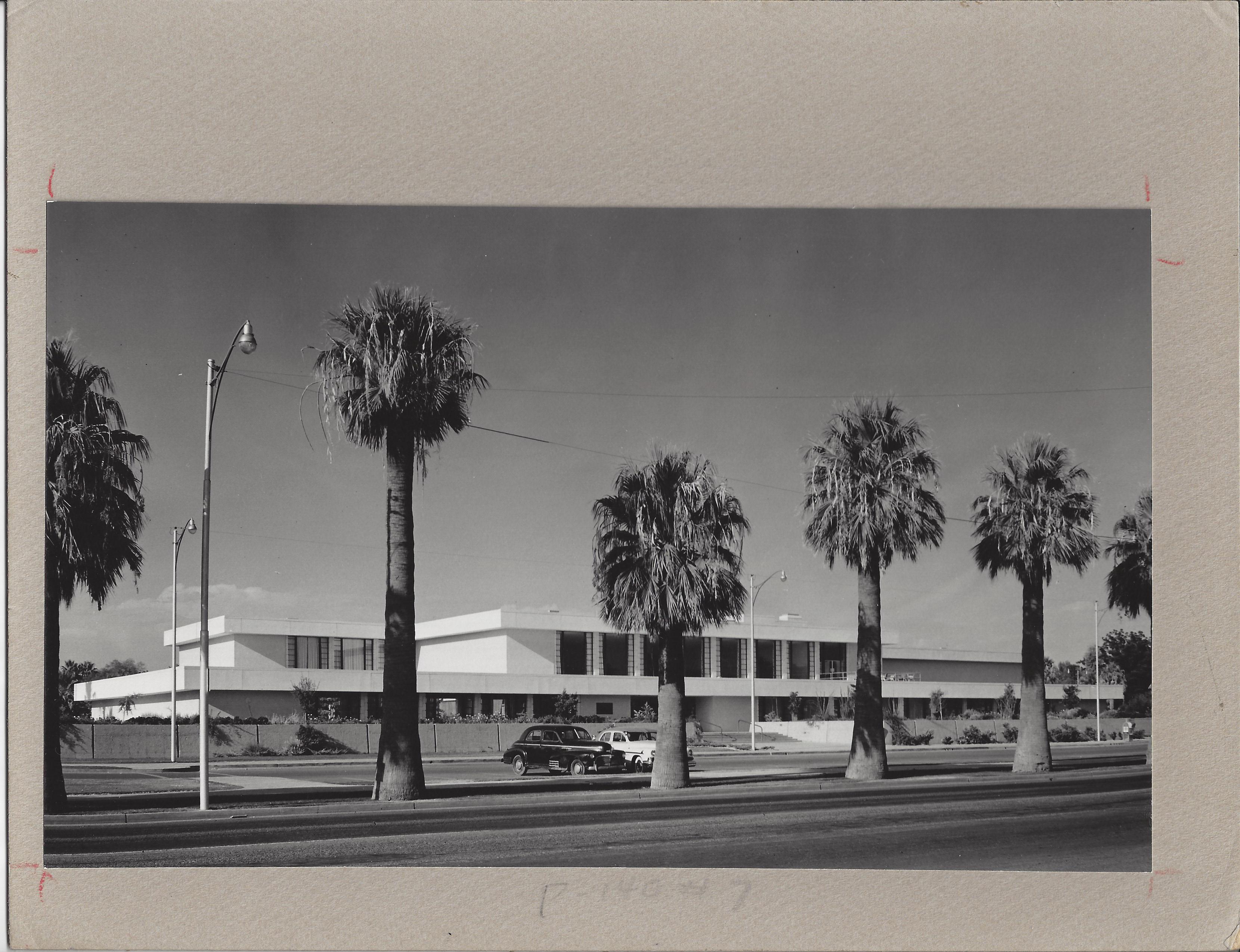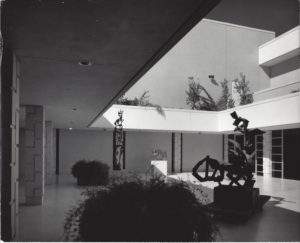Beginning in 1949, the Phoenix Civic Center was designed in stages by Alden B. Dow. His plan grouped a public library, a little theater, an art museum, and support facilities around a square interior courtyard whose landscaping included a pool and native plants, creating an oasis in the desert. The entrance is approached through a colonnade of piers covered in decorative pre-cast concrete panels.
The garden was initially laid out in a free-form curvilinear composition, with the water forming an irregular band along the colonnade. In 1954, the museum building was added to the library and little theater. The museum features floor to ceiling windows covered by a latticework of squares and rectangles, making the museum appear to be a work of art itself. Since it originally had come in over budget and had to be cut back, the museum was subsequently enlarged in 1964.
Mr. Dow was chosen to design the Phoenix Civic Center over Frank Lloyd Wright, when Wright’s design proved too expensive for the city. This created a rift between the teacher and his student that can be seen in correspondence between the two that is housed in the Home & Studio Archives. “I feel as though I had lost a son to find a cheap competitor,” Wright complained after learning Mr. Dow had won the commission.
Nevertheless, years later and with time having healed all wounds, Olgivanna Wright presented the first Frank Lloyd Wright Creativity Award to Mr. Dow in 1982, calling him her late husband’s “spiritual son.”

















